Overview
In today's fast-paced software development landscape, developers often encounter significant coding challenges. These obstacles can hinder productivity and lead to technical debt. However, tools like Kodezi are designed to tackle these issues head-on. Kodezi offers features that automate repetitive tasks, allowing developers to focus on more critical aspects of their projects.
By leveraging Kodezi, teams can improve their workflow efficiency. For instance, its automation capabilities help streamline processes, resulting in higher code quality and faster deployment times. Furthermore, tools such as GitHub Actions and Jenkins complement Kodezi by enhancing collaboration and integration within the development pipeline.
The benefits of using Kodezi extend beyond mere automation. Development teams experience increased productivity, as they can allocate their time to solving complex problems instead of managing mundane tasks. In addition, the reduction of technical debt leads to a more maintainable codebase, which is crucial for long-term project success.
Are you ready to elevate your coding practices? Explore the various tools available on Kodezi's platform and discover how they can transform your development experience. With the right tools, you can overcome common challenges and achieve greater efficiency in your projects.
Introduction
In an era where software development is increasingly complex, the quest for efficiency in AI DevOps pipelines has never been more critical. Developers face numerous challenges that hinder their productivity and the quality of their code. How can they effectively navigate these obstacles? This article explores ten transformative tools designed to supercharge AI DevOps pipeline efficiency. Each tool offers unique features that promise to elevate productivity and enhance collaboration within teams. As organizations grapple with integration and deployment challenges, the question arises: which of these innovative solutions will emerge as the game-changer in optimizing development processes? Let's delve into the tools that can make a significant difference.
Kodezi | Professional OpenAPI Specification Generator - AI Dev-Tool: Automate Codebase Maintenance
The challenges of managing codebases can be daunting for developers. However, the CLI emerges as a pivotal solution within the AI DevOps pipeline that addresses these difficulties effectively. By independently enhancing software quality and resolving bugs before deployment, the CLI consistently monitors for issues such as errors and outdated documentation. It provides immediate corrections and updates, significantly reducing the need for manual involvement.
This automation is crucial for B2B engineering teams aiming to minimize technical debt and enhance software quality within the AI DevOps pipeline. Furthermore, with seamless integration into platforms like GitHub and AI DevOps pipelines, the CLI streamlines workflows, making it an essential tool for teams focused on achieving efficiency and reliability in their management processes.
As Donald Knuth aptly noted, it is vital to clarify what we want machines to accomplish, and this tool embodies that principle by simplifying the intricacies of programming maintenance. Organizations utilizing automated solutions like Kodezi have reported productivity boosts of 25-30%, emphasizing the transformative impact of AI-driven maintenance on software development.
For instance, consider an insurance company in California that reduced its quote generation time from 14 days to just 14 minutes after adopting workflow automation. This example illustrates the tangible benefits that such technologies can provide. Are you ready to explore how Kodezi can revolutionize your coding practices and enhance your team's productivity?
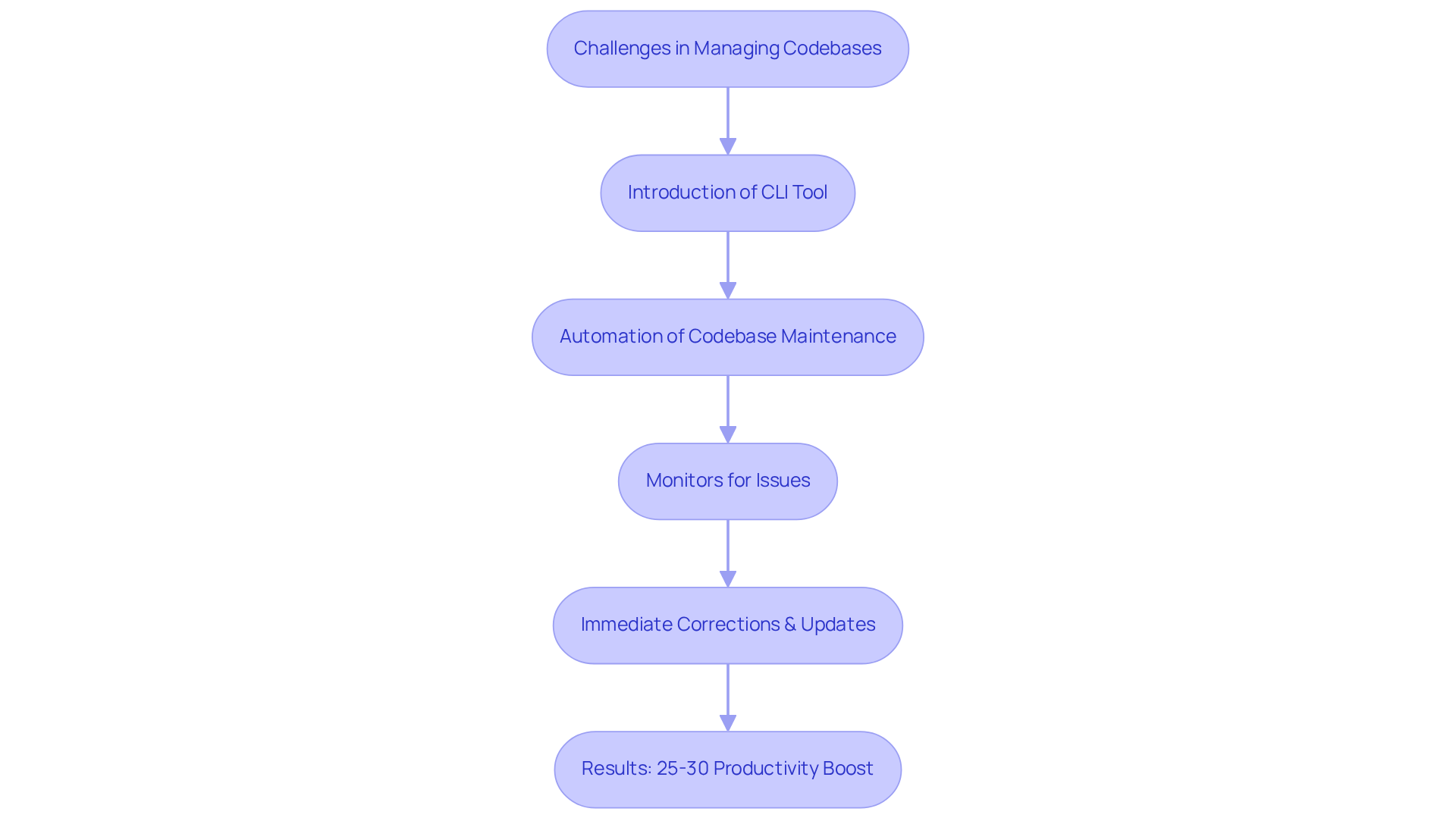
GitHub Actions: Streamline CI/CD Workflows with Automation
Developers often encounter significant challenges in managing workflows within the ai devops pipeline for continuous integration and continuous deployment (CI/CD). GitHub Actions serves as a powerful solution, enabling teams to automate these workflows seamlessly within GitHub. By leveraging YAML files to define workflows in an ai devops pipeline, teams can automatically trigger builds, execute tests, and deploy applications in response to specific events. This ai devops pipeline automation not only accelerates development cycles but also ensures consistency across deployments, which is essential for maintaining high-quality code.
Furthermore, developers have noted that this integration significantly enhances collaboration and visibility among teams. By utilizing GitHub Actions, groups can concentrate on coding rather than process management. For example, teams using GitHub Actions have reported improved deployment consistency, as the tool standardizes workflows, thereby reducing the likelihood of errors during integration.
The impact of automation on the efficiency of the ai devops pipeline is substantial. It minimizes manual intervention and speeds up the feedback loop, enabling teams to respond swiftly to changes and maintain a competitive edge. As you consider the benefits of GitHub Actions, reflect on how such automation could transform your development processes and enhance your team's productivity.
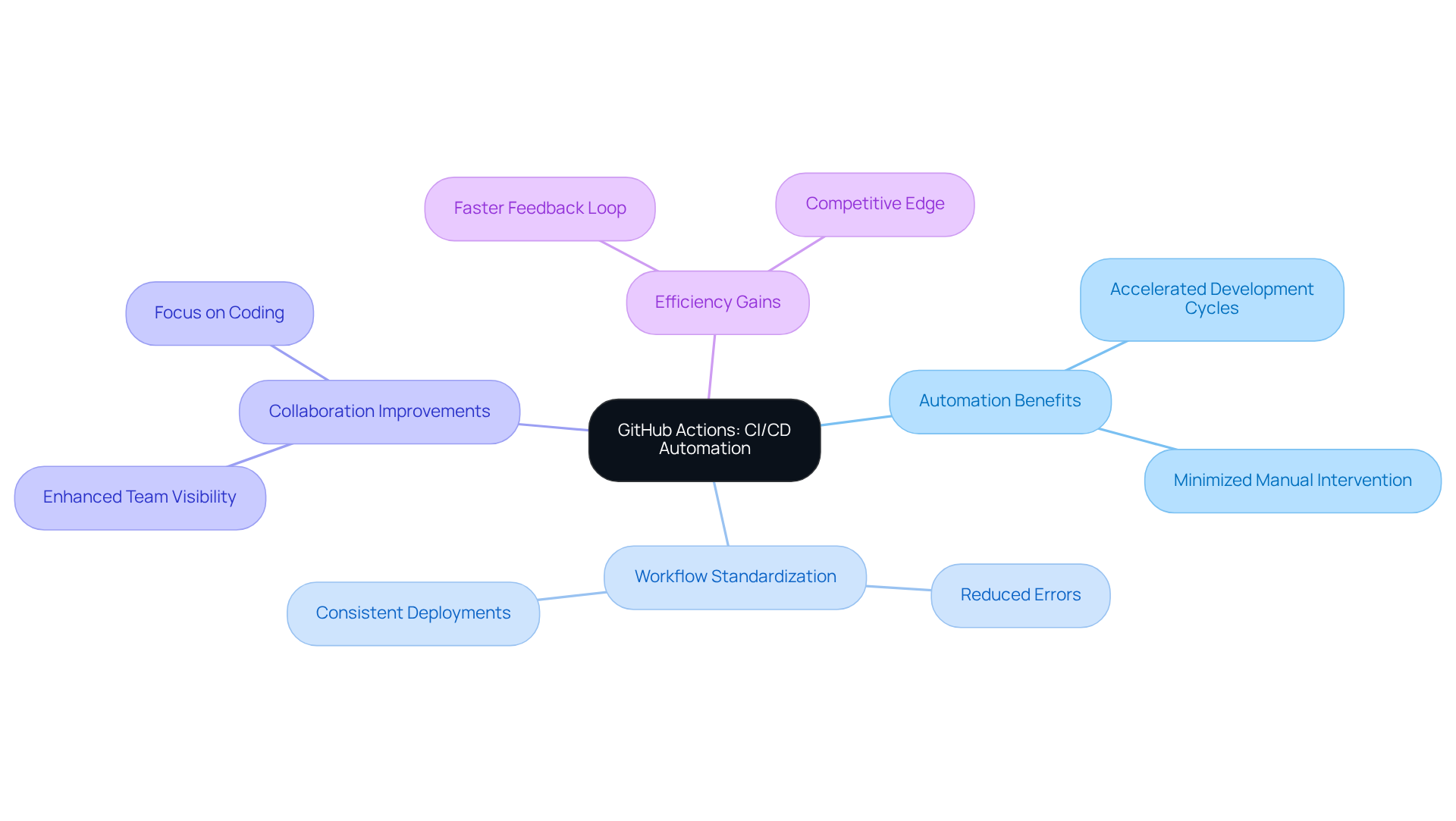
Azure DevOps: Optimize Software Development with Integrated AI Tools
In today's fast-paced software development landscape, developers often face significant coding challenges that can hinder productivity. Azure DevOps provides a robust platform for managing these projects, which includes an AI DevOps pipeline that integrates essential tools for planning, development, testing, and deployment. One solution to these challenges is Kodezi, which enhances the capabilities of Azure DevOps with features that streamline workflows.
Kodezi CLI empowers enterprise developers to autonomously improve their codebases, allowing them to fix bugs before they reach production. This proactive approach not only boosts programming productivity but also enhances code quality. By leveraging Azure Boards for project tracking and utilizing an AI DevOps pipeline with Azure Pipelines for CI/CD, teams can gain valuable insights into their workflows and identify areas for enhancement.
Imagine a scenario where your team can collaborate more effectively, delivering high-quality software on time. Kodezi fosters improved cooperation among group members, facilitating this timely delivery. The comprehensive nature of this platform means that developers can focus on what truly matters—writing great code.
Are you ready to elevate your coding practices? Explore the powerful tools available on Azure DevOps and discover how Kodezi can transform your software development process.
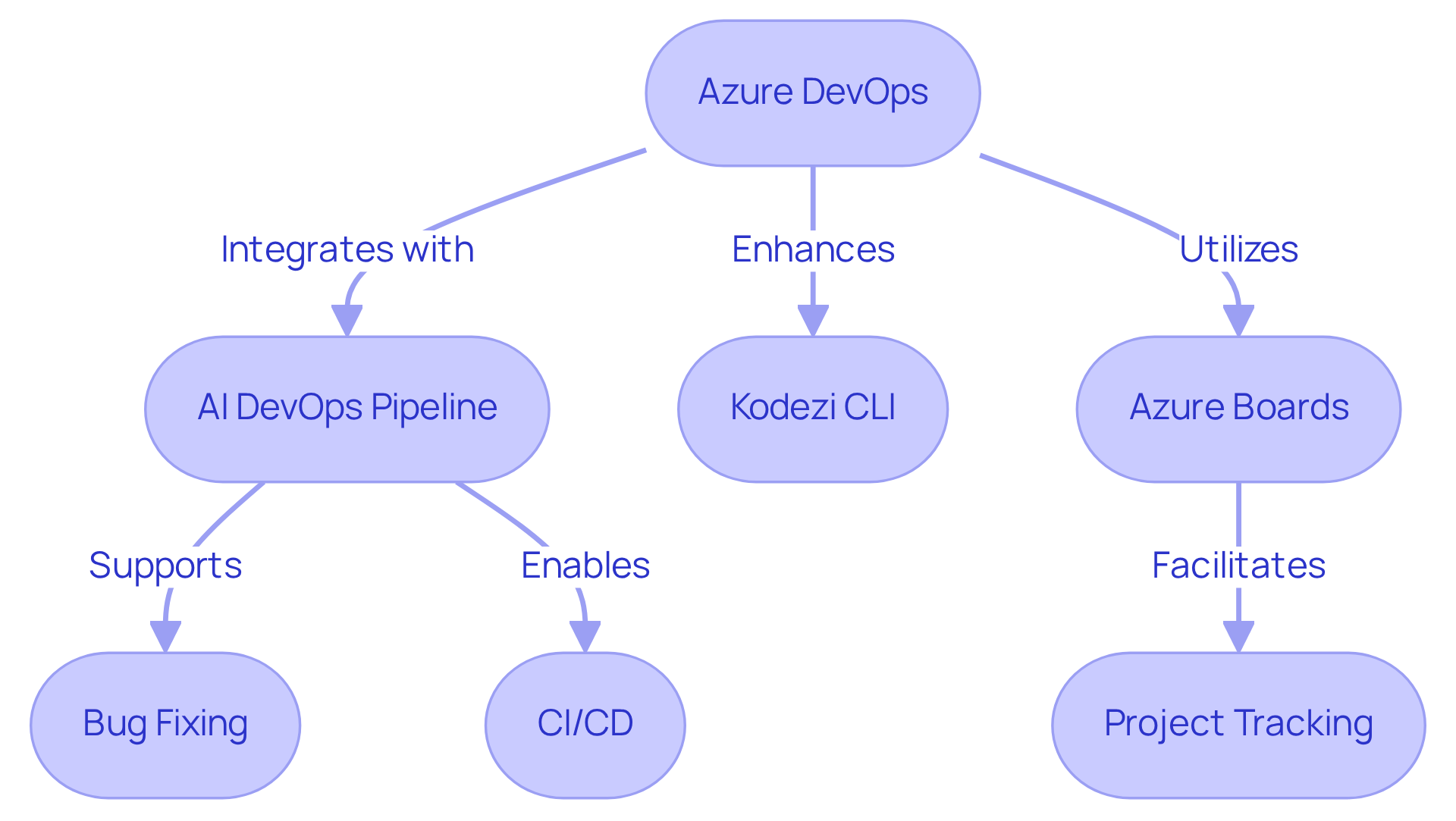
Jenkins: Enhance Automation in Software Development Pipelines
In the world of software development, coding challenges can often slow down progress and hinder productivity. Jenkins, an open-source automation server, is a powerful tool that helps developers automate various stages of their software development lifecycle in an AI DevOps pipeline. Its extensive plugin ecosystem allows teams to tailor Jenkins to fit any workflow, automating builds, tests, and deployments effectively.
Furthermore, by integrating Jenkins with Kodezi's AI-driven automated code debugging and CLI tool into the AI DevOps pipeline, teams can achieve quicker release cycles while upholding high standards of code quality. Kodezi excels in swiftly detecting and resolving codebase issues, enhancing performance, and ensuring security compliance. This integration significantly improves the automated testing process in the AI DevOps pipeline, identifying issues early in the project cycle and boosting overall programming efficiency.
Imagine the impact of resolving code problems before they escalate! With Kodezi, developers can not only streamline their workflows but also enhance their coding practices. By utilizing Kodezi, teams can experience improved productivity and maintain high-quality code, ultimately leading to more successful project outcomes.
If you're looking to enhance your development process, explore the tools available on the Kodezi platform and see how they can transform your coding experience.
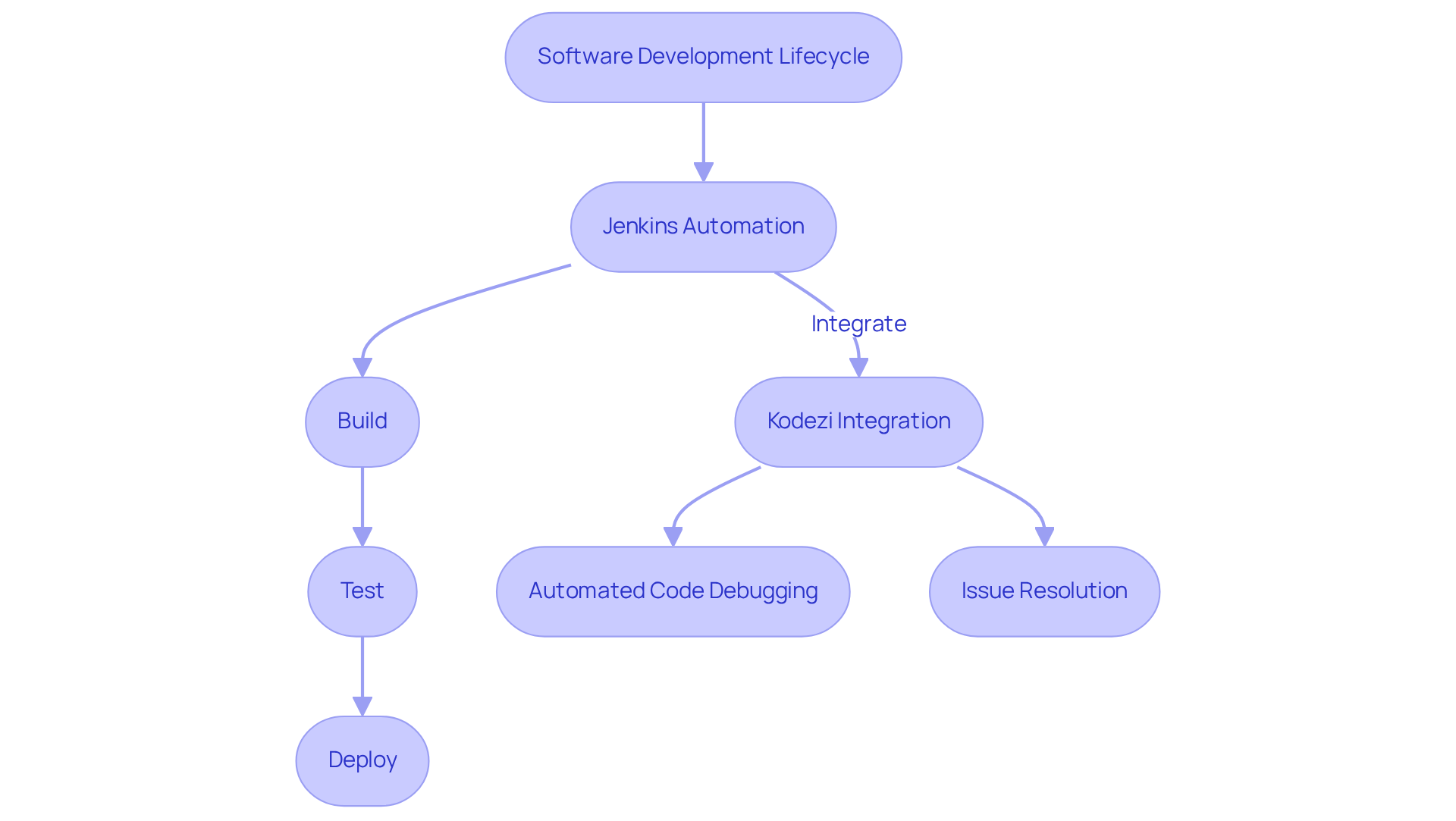
CircleCI: Boost Build Performance with AI-Driven CI/CD
In the fast-paced world of software development, teams often grapple with coding challenges that hinder their efficiency. CircleCI, a cloud-based CI/CD platform, addresses these challenges by enabling groups to automate their development processes with a strong focus on speed and efficiency. By leveraging AI-driven insights in the ai devops pipeline, CircleCI not only enhances build performance but also minimizes the time required to implement changes.
Furthermore, CircleCI's seamless integration with popular version control systems and deployment platforms promotes the adoption of continuous integration and delivery practices, ensuring that software is consistently in a deployable state. To elevate your CI/CD processes even further, consider the CLI tool launched in 2023. This tool autonomously improves code quality and resolves bugs before they reach production, allowing B2B engineering teams to achieve greater efficiency and reliability in their workflows.
Are you ready to enhance your development practices? Explore CircleCI's offerings or request a demo to discover how Kodezi can complement your existing tools, transforming your coding experience into one marked by improved productivity and superior code quality.
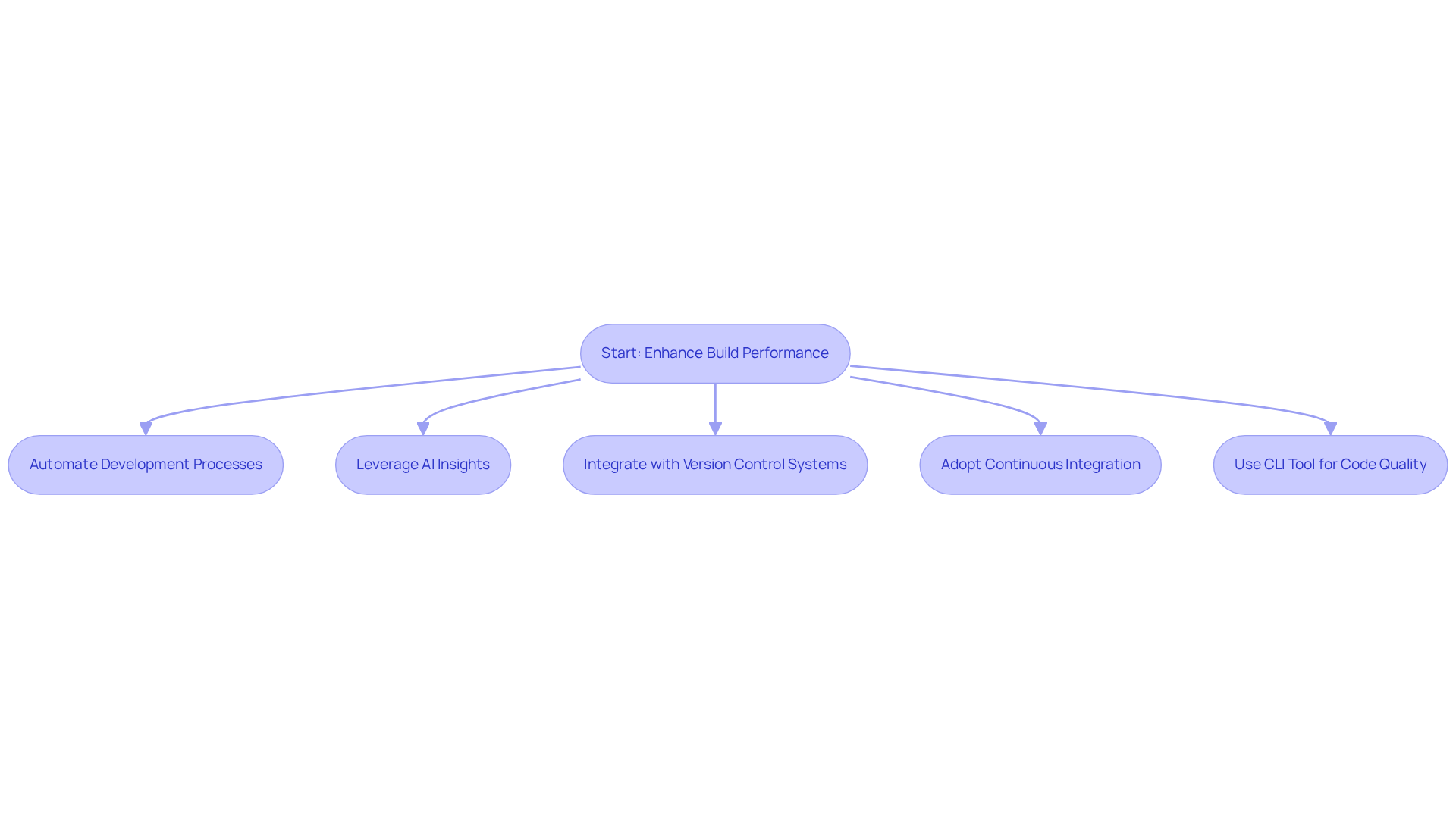
Travis CI: Simplify Testing and Deployment Automation
Developers often face significant challenges in maintaining code quality and streamlining their workflows. Travis CI stands out as a robust continuous integration service that automates the building and testing of modifications within GitHub repositories. Its seamless integration with GitHub allows developers to enhance their testing and deployment workflows, ensuring that software is rigorously tested before deployment. This automation not only accelerates the development cycle but also upholds high standards of quality, as potential issues are identified and resolved early in the process.
Furthermore, the CLI has emerged as an independent solution tailored specifically for B2B engineering teams. Launched in 2023, the CLI enhances software quality and resolves issues before they reach production, making it an essential resource for the ai devops pipeline. Teams that utilize the CLI tool alongside Travis CI can significantly improve their workflows, as both tools focus on automating testing and deployment processes.
In addition, teams employing Travis CI have reported notable improvements in software quality, with automated testing uncovering issues that might otherwise remain hidden until later stages. For example, a case study highlighted how Travis CI's capability to generate Software Bill of Materials (SBOM) from repositories has bolstered security by effectively managing dependencies. Developers value the ease of integrating Travis CI with GitHub, which fosters collaboration and reduces the time spent on manual testing.
Current trends reveal a growing reliance on continuous integration services like Travis CI and Kodezi CLI. These tools not only facilitate faster release cycles but also ensure that code remains clean and compliant. By utilizing an AI DevOps pipeline to automate testing and deployment, teams can focus on feature creation rather than being bogged down by integration problems, ultimately resulting in more robust and dependable software. Are you ready to explore how these tools can transform your development process?
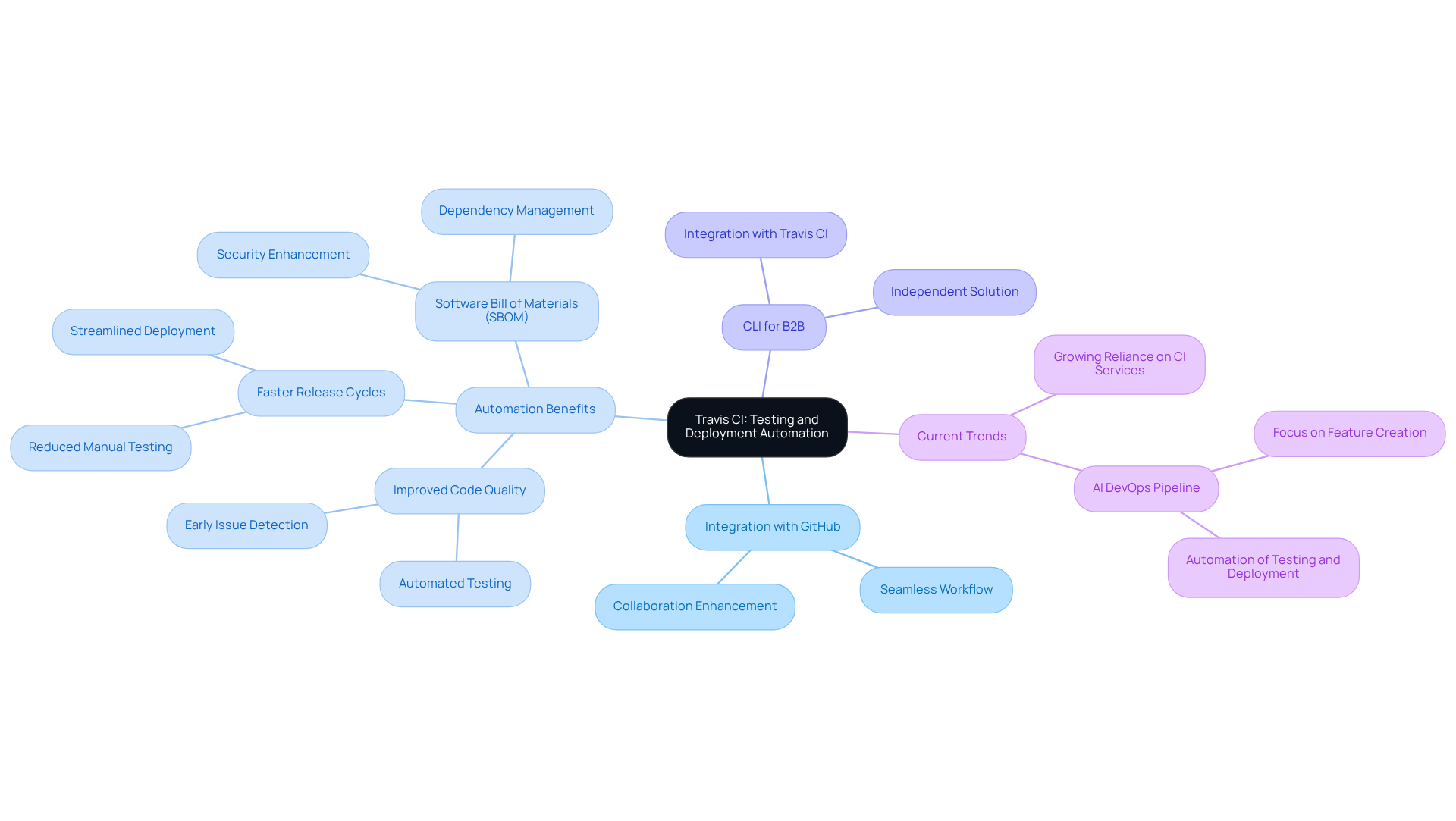
GitLab CI/CD: Foster Collaboration with AI-Enhanced Development Tools
Developers often face significant coding challenges that can hinder productivity and collaboration. GitLab CI/CD stands as a cornerstone of the GitLab platform, effectively addressing these issues through its seamless integration of version control, continuous integration, and project management. Its AI-enhanced capabilities empower teams to automate workflows, significantly improving collaboration. By providing real-time insights into the creation process, GitLab CI/CD enables teams to work together efficiently, ensuring that modifications are assessed and implemented swiftly.
For instance, AI tools within GitLab CI/CD have shown a remarkable ability to enhance documentation quality by 7.5% and accelerate code review speed by 3.1%. These improvements lead to more effective project cycles. Furthermore, the incorporation of AI in troubleshooting CI/CD pipelines has reduced the time required to detect and resolve issues, allowing teams to maintain their workflows and deliver secure software more rapidly.
Industry leaders emphasize the importance of collaboration in driving progress. As one expert noted, "Frequent touchpoints can assist in aligning and concentrating groups to tackle the appropriate issues, resulting in improved solutions and greater business impact." This sentiment is supported by the DORA report, which underscores that effective collaboration practices are vital for successful project outcomes. By leveraging the AI DevOps pipeline capabilities of GitLab CI/CD, development teams can enhance their collaborative efforts, ultimately boosting productivity and fostering innovation.
Are you ready to explore how GitLab CI/CD can transform your development process? Discover the tools available on the platform and see the difference for yourself.
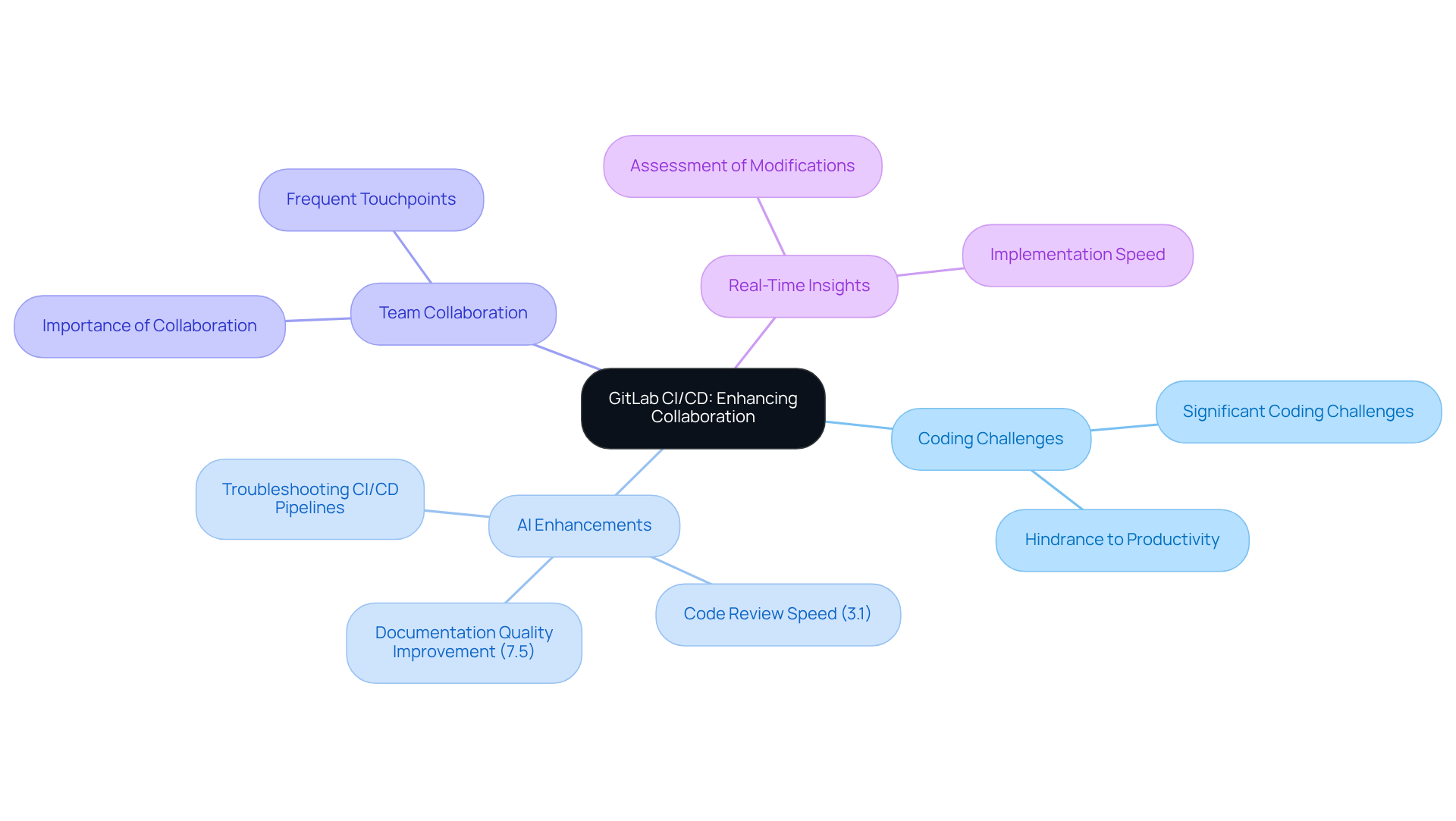
Terraform: Automate Infrastructure Management in DevOps
In the ever-evolving landscape of software development, managing infrastructure can pose significant challenges for teams. Terraform emerges as a powerful open-source tool that addresses these challenges by allowing groups to define and manage their infrastructure as code. This capability streamlines the provisioning and management processes within the ai devops pipeline, ensuring environments remain consistent and reproducible—a critical factor in the fast-paced world of DevOps, where rapid and reliable application deployment is essential.
Furthermore, developers appreciate Terraform's ability to manage infrastructure versions, which simplifies monitoring modifications and fosters collaboration among team members. This automation minimizes the risk of human error and accelerates deployment cycles, enabling teams to focus on innovation rather than routine maintenance. Have you considered how automation could transform your workflow?
For instance, organizations leveraging Terraform have reported substantial improvements in operational efficiency. This enhancement allows them to swiftly adapt to changing demands and scale their infrastructure seamlessly. As teams increasingly adopt Infrastructure as Code (IaC) practices, Terraform stands out as a key enabler of enhanced DevOps efficiency within the ai devops pipeline, revolutionizing the management and deployment of infrastructure. Why not explore how Terraform can elevate your infrastructure management today?
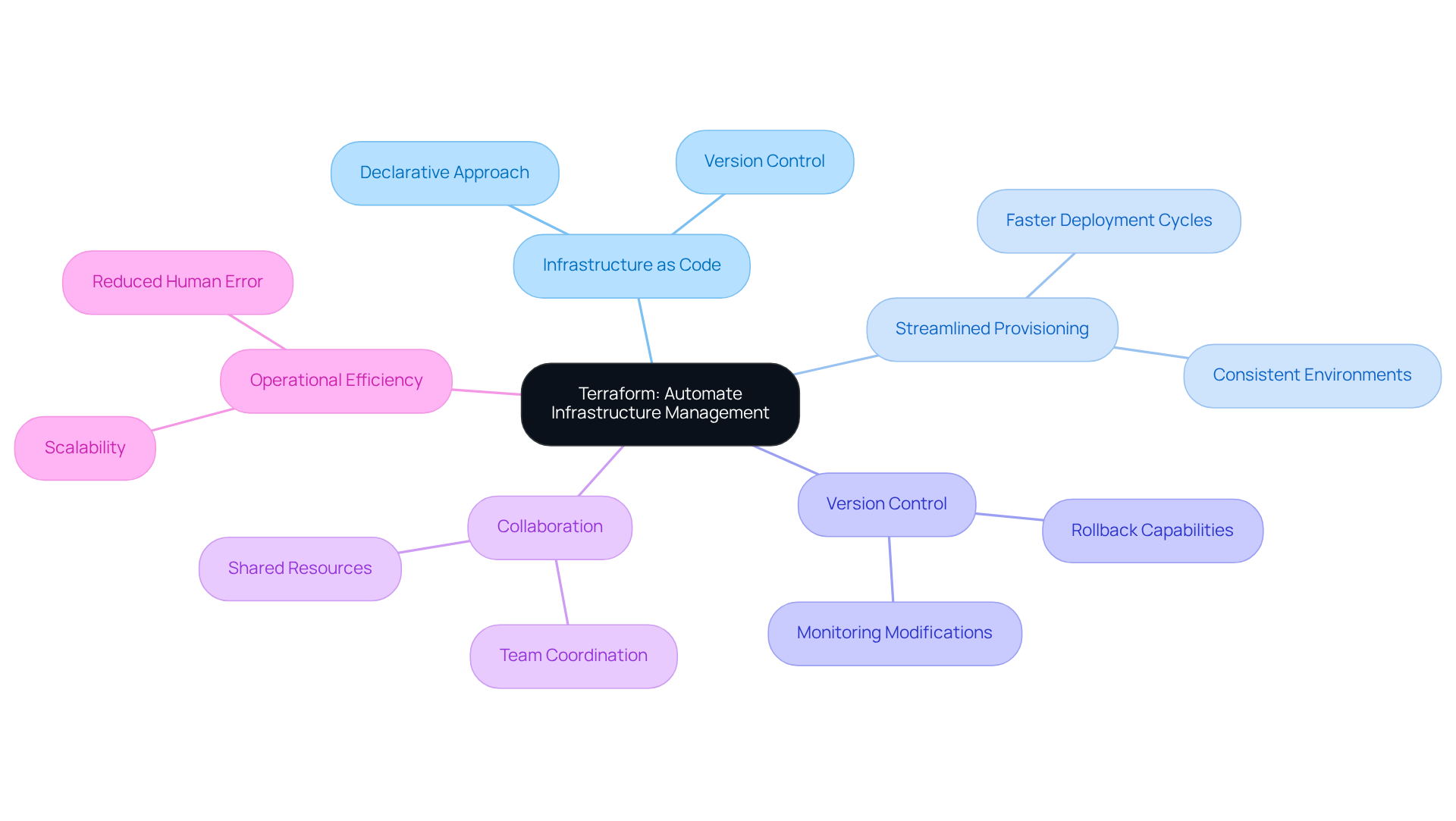
Kubernetes: Scale and Manage Containerized Applications with AI
Kubernetes stands out as a powerful open-source container orchestration platform that automates the deployment, scaling, and management of containerized applications. Its automatic scaling feature empowers applications to dynamically adjust resources based on real-time demand, ensuring optimal performance even during traffic spikes. Furthermore, Kubernetes' self-healing capabilities automatically detect and rectify issues, such as restarting failed containers or rescheduling them on healthy nodes, significantly enhancing application reliability.
Organizations leveraging Kubernetes have reported improved operational efficiency through centralized log management, which enables quick inspections of logs from crashing application containers. This capability allows teams to conduct evidence-based inquiries for security concerns, thus enhancing troubleshooting procedures. For instance, Dynatrace's case study on centralized log management illustrates how Kubernetes facilitates efficient resource management and issue resolution.
In addition, Kubernetes supports various types of container runtimes and infrastructure, provided they have some version of Linux or Windows, showcasing its versatility in managing diverse environments. It also facilitates seamless service discovery using labels and annotations, simplifying the association of services with groups of pods. This automation not only improves network management efficiency but also allows teams to concentrate on creating innovative applications instead of grappling with infrastructure complexities.
Industry leaders emphasize the transformative impact of Kubernetes automation. As one expert noted, "Gone are the days of gaps in visibility and long resolution times; Kubernetes provides unparalleled end-to-end visibility across your entire stack." This level of insight is crucial for maintaining high application performance and availability in today's fast-paced digital landscape.
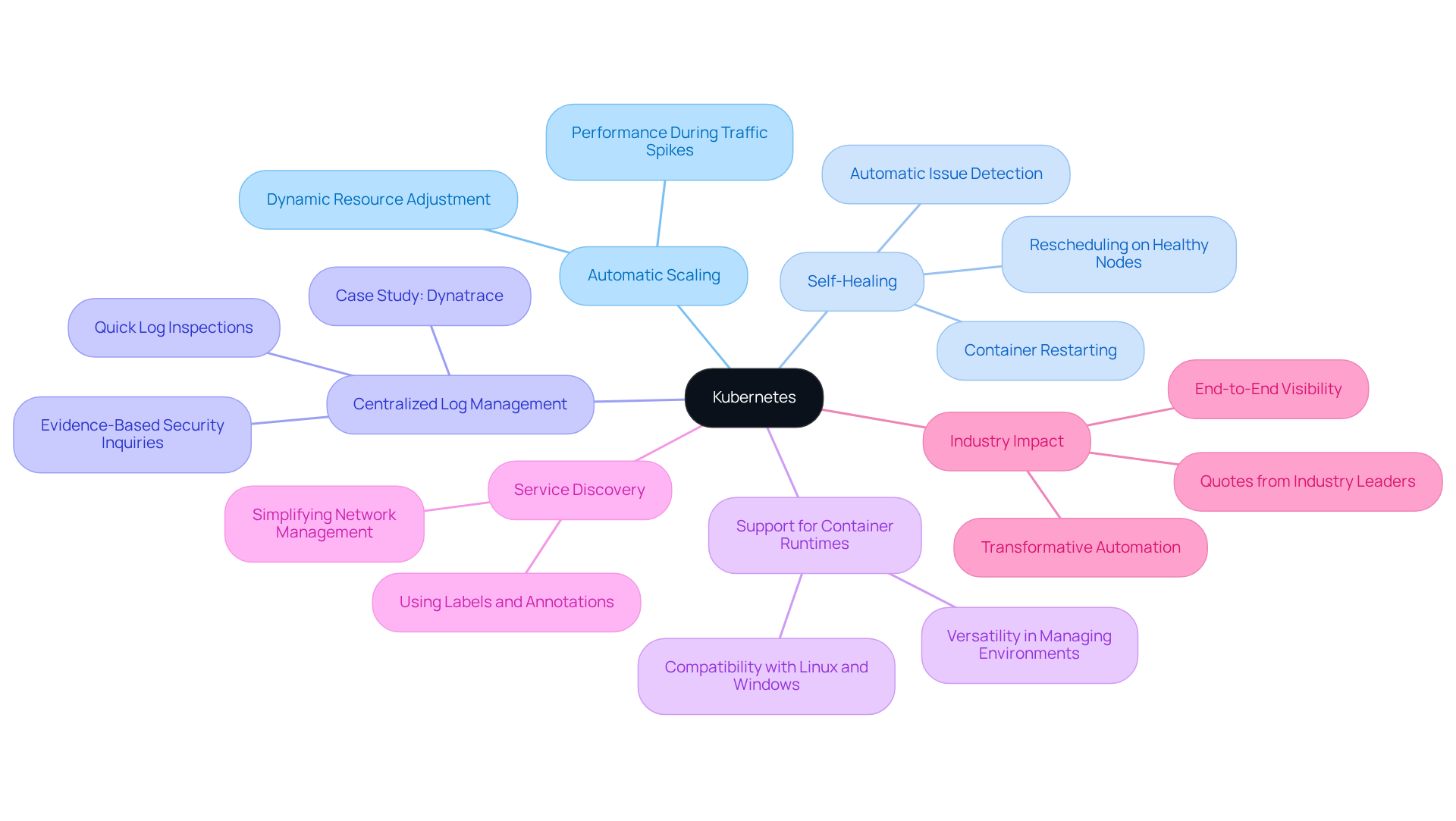
SonarQube: Ensure Code Quality with AI-Powered Analysis
Developers often face significant challenges when it comes to maintaining high-quality code and addressing security vulnerabilities. SonarQube, an open-source platform, continuously examines software quality and security issues. By integrating with CI/CD pipelines, it provides real-time feedback on changes, helping teams identify problems early in the development process.
In addition, the introduction of the Kodezi CLI in 2023 offers an independent solution that enhances programming quality while automatically repairing codebases. This innovative tool greatly reduces the time spent on pull requests. How does Kodezi achieve this? Its AI-driven capabilities complement SonarQube's analysis by proactively fixing bugs before they reach production.
The benefits of using Kodezi are clear. Development teams can maintain high standards of code quality, ensuring that their code is not only functional but also secure and maintainable. Ultimately, this integration enhances the efficiency of their AI DevOps pipeline. Are you ready to explore the tools available on the Kodezi platform and elevate your coding practices?
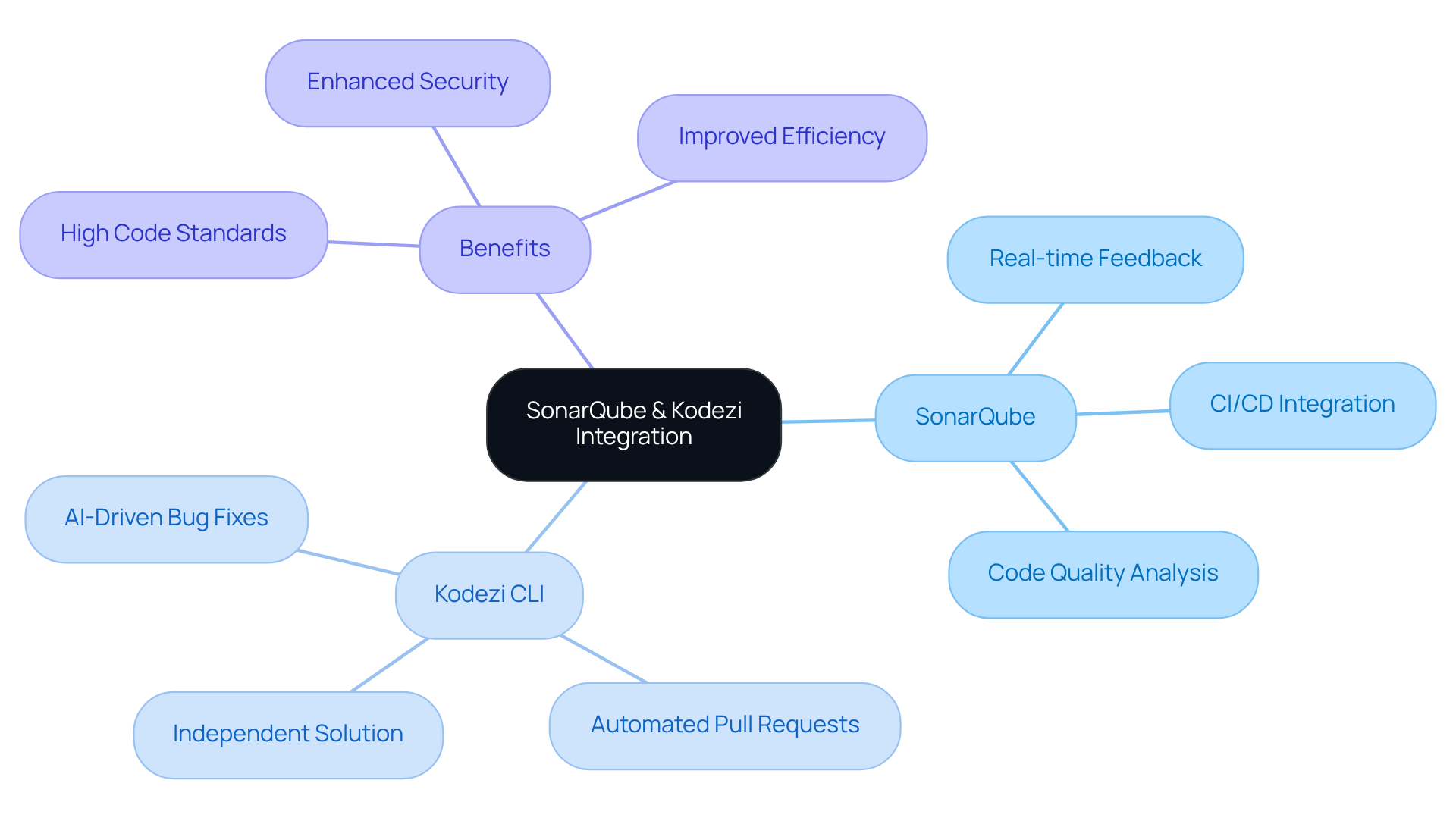
Conclusion
The integration of AI tools into the DevOps pipeline is transforming the way development teams function, significantly enhancing efficiency and productivity throughout various stages of software development. By utilizing advanced solutions such as Kodezi, GitHub Actions, Azure DevOps, and others, organizations can automate essential processes, minimize manual intervention, and ultimately deliver high-quality software at a faster pace.
Key tools include:
- Jenkins
- CircleCI
- Travis CI
- GitLab CI/CD
- Terraform
- Kubernetes
- SonarQube
These tools are highlighted for their unique capabilities in optimizing workflows and ensuring code quality. Each tool provides distinct advantages, from automating testing and deployment to managing infrastructure and fostering collaboration. The cumulative effect of these tools not only streamlines processes but also empowers teams to concentrate on innovation and quality, culminating in enhanced project outcomes.
As the software development landscape evolves, embracing AI-driven solutions is no longer optional; it is essential for maintaining a competitive edge. Organizations should actively investigate these tools and consider how they can be integrated into their existing workflows to promote efficiency, collaboration, and superior software quality. The future of DevOps is promising, and those who harness the power of these technologies will undoubtedly lead the way toward a more productive and innovative development environment.
Frequently Asked Questions
What is Kodezi and how does it assist developers?
Kodezi is a professional OpenAPI specification generator that automates codebase maintenance, enhancing software quality and resolving bugs before deployment. It monitors for issues such as errors and outdated documentation, providing immediate corrections and updates, which reduces the need for manual involvement.
How does Kodezi benefit B2B engineering teams?
Kodezi helps B2B engineering teams minimize technical debt and enhance software quality within the AI DevOps pipeline by automating maintenance tasks, thereby improving efficiency and reliability in management processes.
What kind of productivity improvements have organizations reported using Kodezi?
Organizations using Kodezi have reported productivity boosts of 25-30%, highlighting the transformative impact of AI-driven maintenance on software development.
Can you provide an example of Kodezi's effectiveness?
An example is an insurance company in California that reduced its quote generation time from 14 days to just 14 minutes after adopting workflow automation with Kodezi.
What role do GitHub Actions play in CI/CD workflows?
GitHub Actions enable teams to automate workflows within GitHub for continuous integration and continuous deployment (CI/CD) by using YAML files to define workflows that trigger builds, execute tests, and deploy applications automatically.
How do GitHub Actions enhance collaboration among development teams?
By automating workflows, GitHub Actions improve collaboration and visibility among teams, allowing them to focus more on coding rather than process management.
What impact does automation through GitHub Actions have on development cycles?
Automation through GitHub Actions accelerates development cycles, ensures consistency across deployments, and minimizes manual intervention, leading to a quicker feedback loop and enabling teams to respond swiftly to changes.
How does Azure DevOps optimize software development?
Azure DevOps provides a robust platform for managing software development projects, integrating essential tools for planning, development, testing, and deployment, including the Kodezi CLI that enhances code quality and productivity.
What is the role of Azure Boards and Azure Pipelines in Azure DevOps?
Azure Boards are used for project tracking, while Azure Pipelines facilitate CI/CD processes. Together, they help teams gain insights into their workflows and identify areas for enhancement.
How does Kodezi improve team collaboration within Azure DevOps?
Kodezi fosters improved cooperation among team members by enabling them to autonomously fix bugs before they reach production, allowing for timely delivery of high-quality software.




